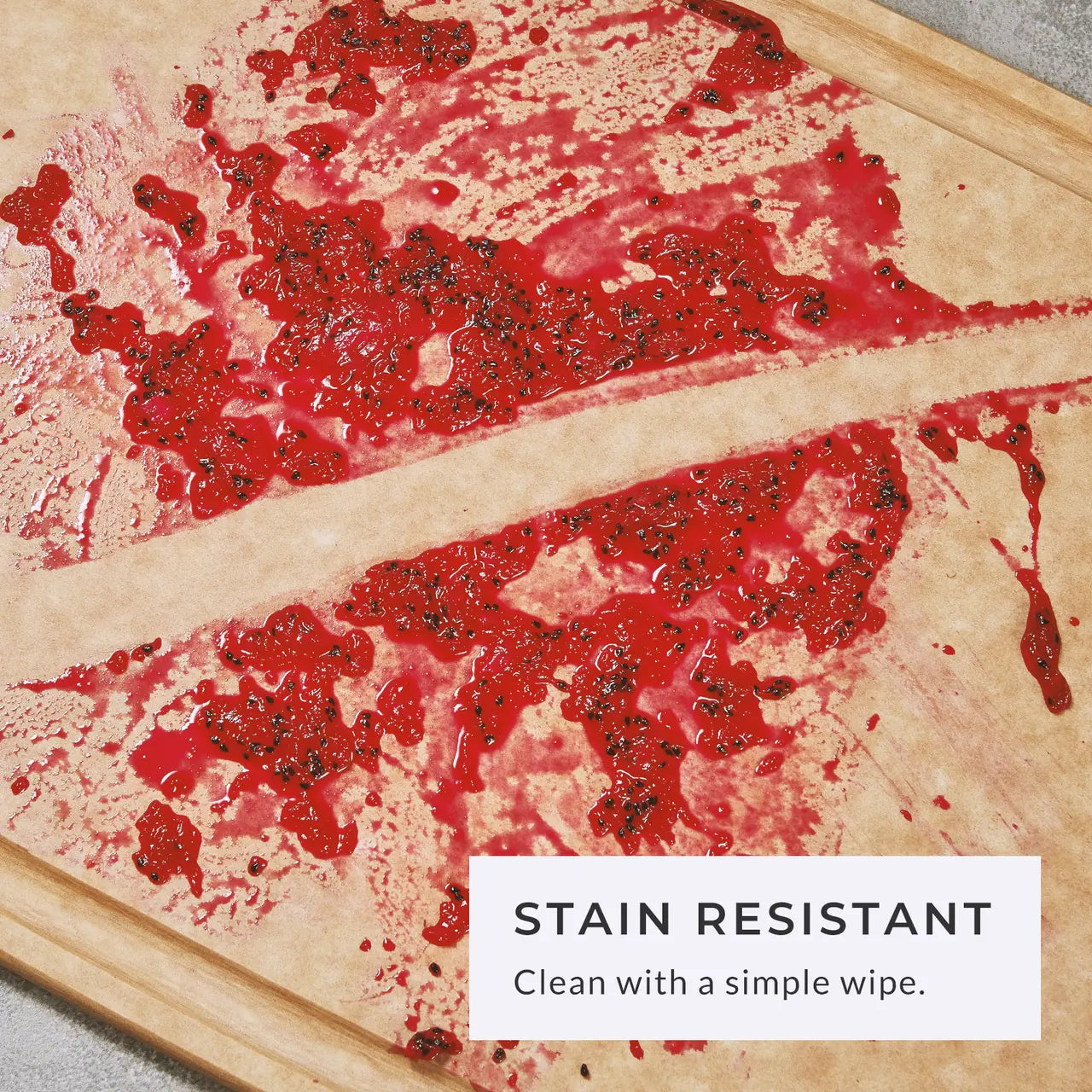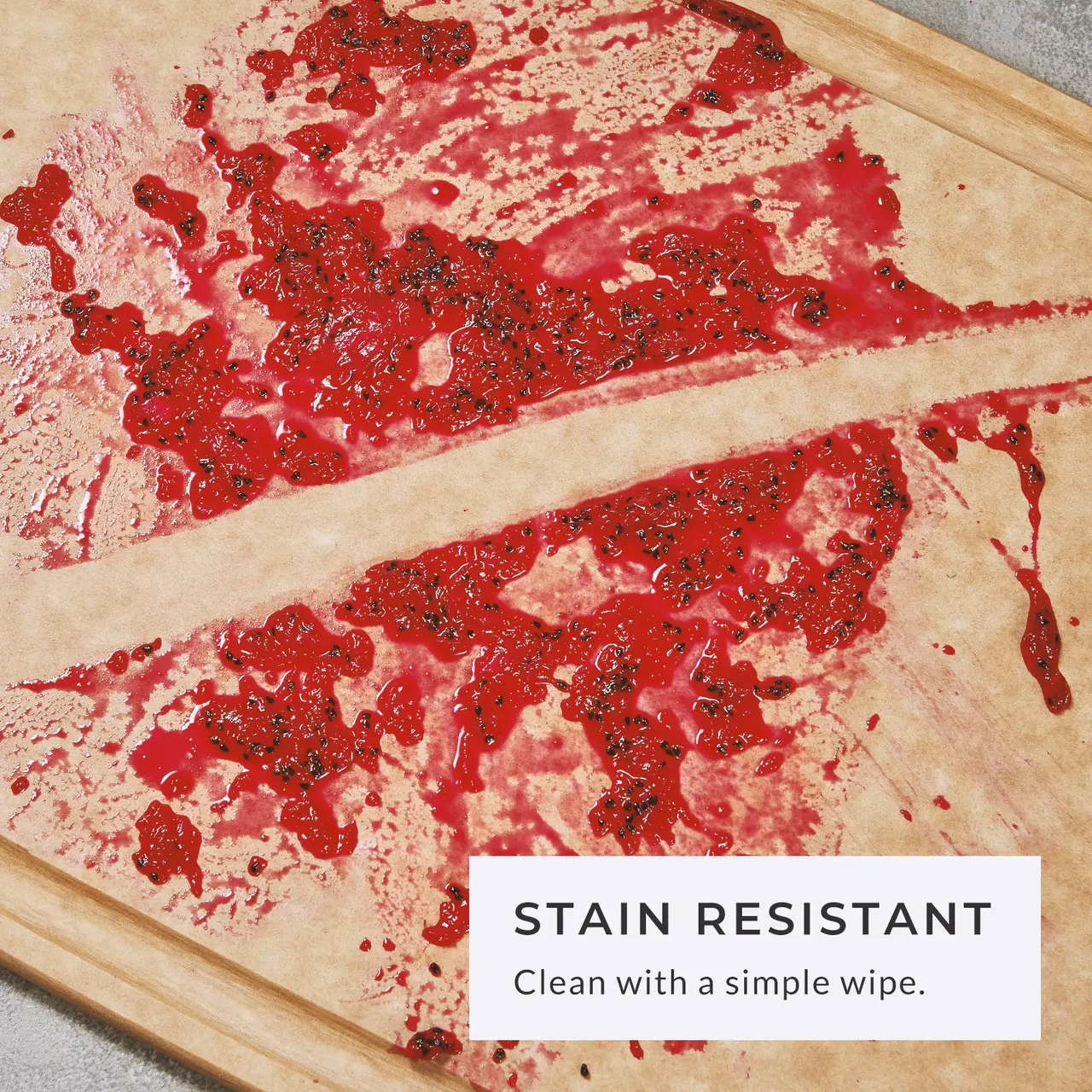
Non Porous Cutting Boards: A Sustainable Choice for Every Cook
In the world of cooking, choosing the right tools can make all the difference. One often overlooked but crucial item in every kitchen is the cutting board. With a multitude of options available, non porous cutting boards stand out not just for their practicality but also for their sustainability. In this post, we’ll explore why these boards are a perfect fit for both novice cooks and seasoned chefs alike.
Understanding Non Porous Materials
Non porous cutting boards are crafted from materials that do not absorb liquids, making them a hygienic choice for food preparation. But what exactly makes a material non porous? Let’s break it down. At the core, non porous materials, such as certain plastics and some types of glass, have molecular structures that prevent liquid from seeping into their surfaces. This characteristic not only stops bacteria from lingering but also simplifies the cleaning process.
The science behind non porous materials is fascinating. For instance, high-density polyethylene (HDPE), commonly used in cutting boards, exhibits strong resistance to moisture and bacteria. This means less time scrubbing and more time slicing! Non porous surfaces are often smoother than porous options, reducing the likelihood of food particles getting stuck, which is a huge plus for home chefs looking to ensure food safety.
Benefits of Using Non Porous Cutting Boards
From easy cleaning to improved sanitation, non porous cutting boards offer a plethora of benefits. In this section, we’ll delve into the specific advantages that they bring to your kitchen. First and foremost, the low-maintenance nature of these boards makes them a top choice for busy cooks. Unlike wooden boards that require special care and oils to maintain, non porous boards can simply be washed with hot, soapy water or even in the dishwasher.
Another significant benefit of non porous cutting boards is their durability. They tend to be more resistant to deep cuts and scratches than their porous counterparts, which can harbor bacteria in those grooves. This durability ensures that your board will last longer, providing a more sustainable option over time. Plus, knowing that your cutting board can withstand the rigors of daily use just adds to the peace of mind for any home cook.
Beyond hygiene, non porous cutting boards also offer versatility. Whether you’re chopping vegetables, slicing meats, or even rolling out dough, these boards can handle it all without fear of damage. Their ability to maintain a smooth surface means you can switch between tasks seamlessly, ensuring a more efficient cooking experience.
Environmental Impact: A Sustainable Choice
As sustainability becomes increasingly important in our daily lives, choosing a non porous cutting board can align with eco-friendly practices. Here’s how opting for these boards helps reduce waste and promotes sustainability. Firstly, many non porous boards are made from recycled materials or sustainable sources, contributing to a circular economy. This means that not only are you making a smart choice for your kitchen, but you’re also supporting environmentally responsible manufacturing.
Additionally, the longevity of non porous cutting boards means fewer replacements over time. By investing in a durable board, you reduce your overall consumption and waste, which is a significant factor in promoting a sustainable lifestyle. If a board lasts for years rather than months, you’re effectively minimizing the environmental impact associated with disposing of old or broken tools.
Lastly, many non porous cutting boards are made from materials that are free from harmful chemicals, such as BPA or phthalates. This not only makes them safer for food preparation but also reduces the risk of releasing toxins into the environment, aligning your kitchen practices with a cleaner planet.
Comparing Materials: Bamboo, Plastic, and Glass
Not all cutting boards are created equal. In this section, we’ll compare popular non porous materials like bamboo, plastic, and glass, highlighting their unique features and benefits. Bamboo, known for its rapid growth and sustainability, makes an attractive option. It is lightweight, durable, and naturally germ-resistant. However, it may still require some maintenance to keep it from warping over time.
On the other hand, plastic cutting boards are often the most popular choice among home cooks. They come in various colors, sizes, and flexibility, which can be advantageous for different cutting tasks. But not all plastics are created equal; opting for high-density polyethylene will ensure you’re getting a product that meets hygienic standards and won’t harbor bacteria.
Glass cutting boards also fall into the non porous category. They are aesthetically pleasing and remarkably easy to clean, providing an additional bonus. However, one must consider their hardness—glass can be harsh on knife blades and may be prone to chipping if not handled properly. Each material has distinct advantages and potential drawbacks, making it essential to choose the one that best fits your cooking style and habits.
Maintaining Your Non Porous Cutting Board
Once you’ve made the investment in a non porous cutting board, it’s essential to know how to take care of it. Here are some easy maintenance tips to keep your board in top shape. First, always wash your cutting board after each use with hot, soapy water. This simple practice prevents cross-contamination and keeps your board looking fresh.
Additionally, avoid leaving your cutting board in standing water, as this can cause warping or damage over time. Instead, dry it immediately after washing. For particularly stubborn stains or odors, a mixture of baking soda and water can work wonders. Simply scrub the affected area, rinse, and allow it to air dry.
Finally, be mindful of your cutting utensils. Using appropriate knives and tools can greatly extend the life of your cutting board. Avoid using heavy cleavers or serrated knives that can gouge the surface, particularly if you’re using materials like plastic or glass. By following these few simple maintenance tips, you can ensure your non porous cutting board serves you well for years.
Final Thoughts on Choosing Non Porous Cutting Boards
Non porous cutting boards not only enhance your cooking experience but also promote a sustainable kitchen. By choosing these durable, easy-to-clean options, you are contributing to a healthier environment and ensuring that your culinary adventures are both safe and enjoyable. So, whether you’re prepping veggies for a weeknight meal or slicing bread for Sunday brunch, consider investing in a non porous cutting board. Your kitchen—and the planet—will thank you!

